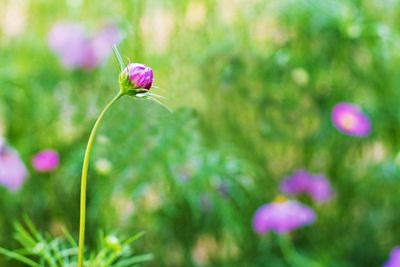What is a Bud?
Most of us have noted them. Those subtle swellings on plants in early spring. These are buds on plants and are the harbinger of things to come in the growing season. Both herbaceous and woody plants produce buds, either as they produce new leaves or as part of the blooming process. There are several types of buds, delineated by their location, but all will eventually burst forth and become new plant material. Buds on plants are an early indicator of new growth of some sort. While it may be difficult to discern whether the new growth is a flower or a leaf, identifying flower buds can generally be done by noting their location. Flower buds are not usually on the stem or limb of a plant, although there are some cases in which they are. Most flower buds will be found at terminal ends or on flowering stalks, making it easier to identify them. These would be terminal buds, while those between the leaf and stem are called axillary buds. Adventitious buds are those that form as a result of injury. Many buds require a period of cold exposure in order to force them to develop. This is also a rest period during which they are fairly tolerant of cold. Once the bud is awakened by warm weather, it is at risk from late freezes.
Flower Bud vs. Leaf Bud
In woody plants, the buds have a protective, leathery scale-like surface. Annuals and herbaceous perennials develop naked buds which are much more susceptible to weather influences and damage. This can help you with identifying flower buds. They will be soft and malleable as opposed to those on a conifer. Interestingly, a flower bud is actually a modified leaf. Some flower buds may be fruit buds as the flower will result in a fruit. Mixed buds contain both the immature leaf structure and flower parts. Leaf buds are often plumper and more pointed than flower buds. No matter the type of bud, as soon as they have released dormancy, they have the capacity to sprout and develop as soon as the temperature is correct for that type of plant.
Additional Plant Bud Information
Buds are made from meristem tissue. This is the part of a plant containing undifferentiated cells. Bud cells are ready for rapid cell division, the action which fuels growth and the development of different plant structures. Most buds form at the end of summer or in fall. They remain small and close to the plant with a protective covering. In spring when sap begins to flow, the bud begins to swell noticeably. It is much like a cocoon where a new form emerges after a period of time. Some interesting plant bud information is regarding edible buds. Cabbage and head lettuce are enlarged terminal buds. The axillary buds are the edible part of Brussels sprouts. Broccoli, cauliflower, and artichoke plants are other examples of edible buds.
